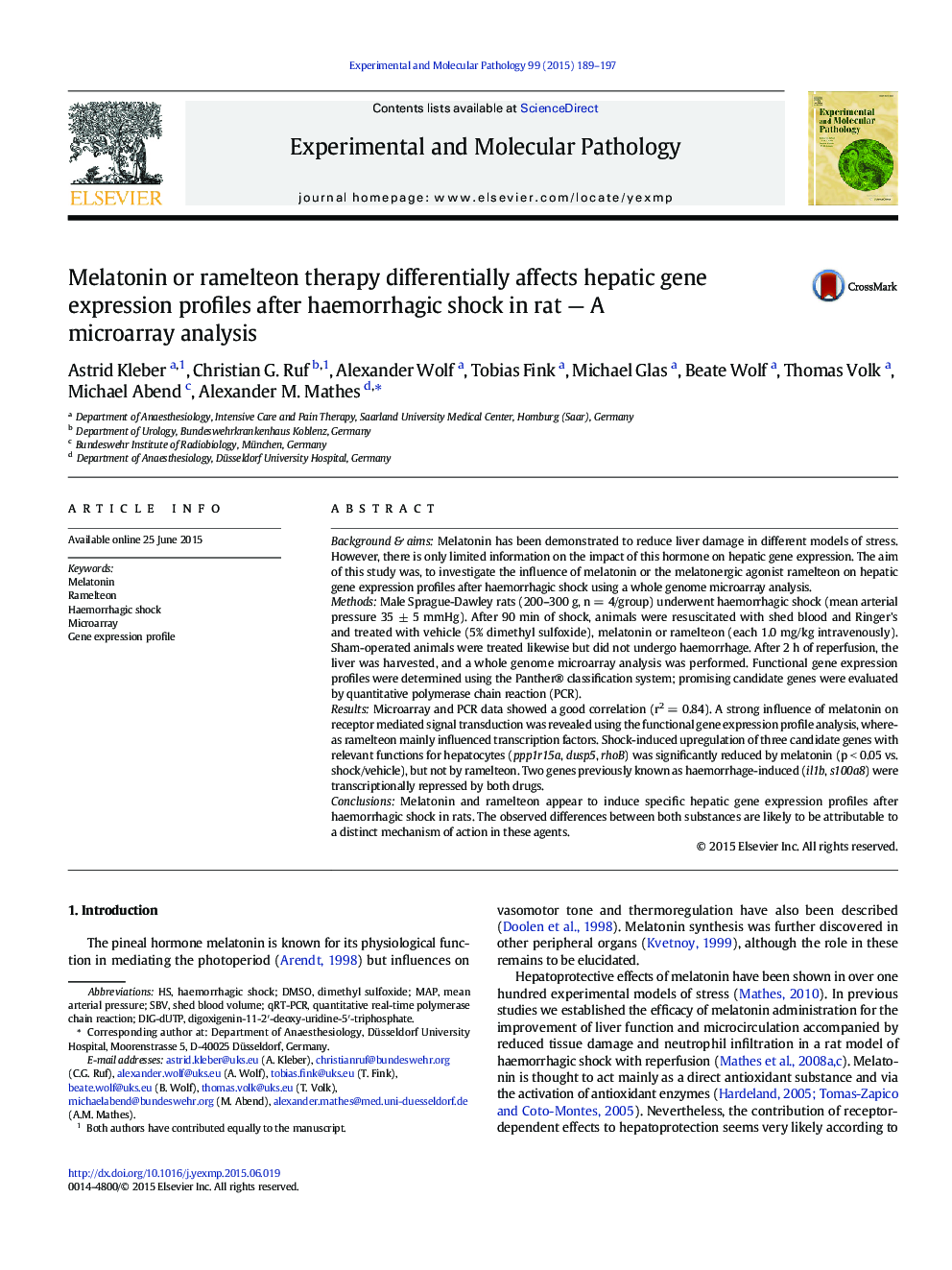| Article ID | Journal | Published Year | Pages | File Type |
|---|---|---|---|---|
| 2775011 | Experimental and Molecular Pathology | 2015 | 9 Pages |
•Melatonin reduces the upregulation of 17 known and 4 new haemorrhage-induced genes.•Transcriptional alterations by melatonin or ramelteon differ to a great extent.•Il1β and S100a8 might be common targets of melatonin receptor activation.
Background & aimsMelatonin has been demonstrated to reduce liver damage in different models of stress. However, there is only limited information on the impact of this hormone on hepatic gene expression. The aim of this study was, to investigate the influence of melatonin or the melatonergic agonist ramelteon on hepatic gene expression profiles after haemorrhagic shock using a whole genome microarray analysis.MethodsMale Sprague-Dawley rats (200–300 g, n = 4/group) underwent haemorrhagic shock (mean arterial pressure 35 ± 5 mmHg). After 90 min of shock, animals were resuscitated with shed blood and Ringer's and treated with vehicle (5% dimethyl sulfoxide), melatonin or ramelteon (each 1.0 mg/kg intravenously). Sham-operated animals were treated likewise but did not undergo haemorrhage. After 2 h of reperfusion, the liver was harvested, and a whole genome microarray analysis was performed. Functional gene expression profiles were determined using the Panther® classification system; promising candidate genes were evaluated by quantitative polymerase chain reaction (PCR).ResultsMicroarray and PCR data showed a good correlation (r2 = 0.84). A strong influence of melatonin on receptor mediated signal transduction was revealed using the functional gene expression profile analysis, whereas ramelteon mainly influenced transcription factors. Shock-induced upregulation of three candidate genes with relevant functions for hepatocytes (ppp1r15a, dusp5, rhoB) was significantly reduced by melatonin (p < 0.05 vs. shock/vehicle), but not by ramelteon. Two genes previously known as haemorrhage-induced (il1b, s100a8) were transcriptionally repressed by both drugs.ConclusionsMelatonin and ramelteon appear to induce specific hepatic gene expression profiles after haemorrhagic shock in rats. The observed differences between both substances are likely to be attributable to a distinct mechanism of action in these agents.
